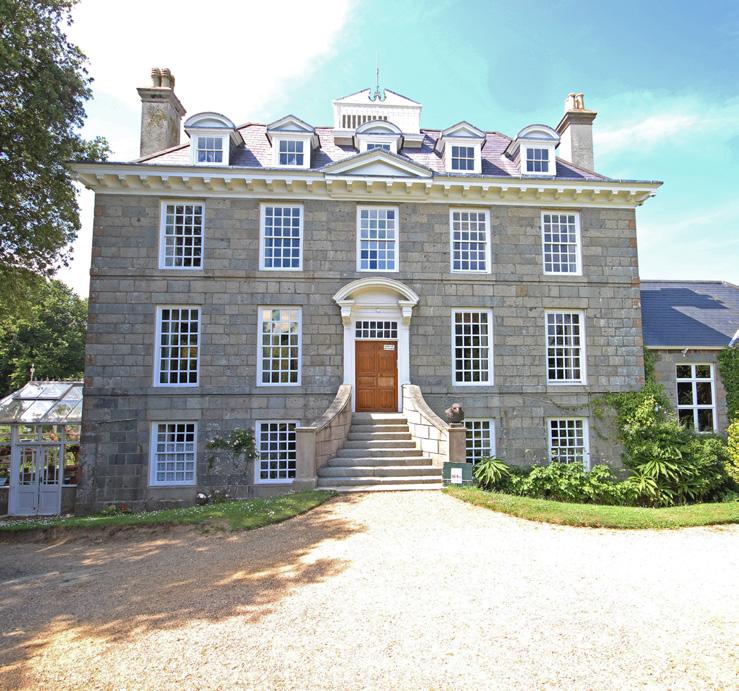
5 minute read
Mansions, Manor and Merchant Houses
Sausmarez Manor

Advertisement
Rozel Glebe House
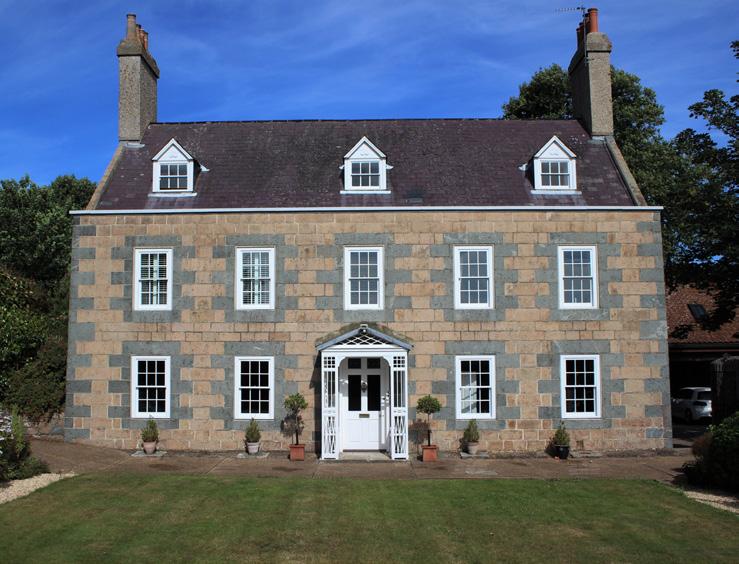
THE STORIES THESE WALLS CAN TELL…
When Trevor Cooper stepped back from Cooper Brouard estate agents after a career working in Guernsey’s property market, his focus stayed very much on local houses. His book, ‘Mansion, Manor & Merchant Houses’, is the result. Covering social history as much as architecture, it’s a fascinating read for anyone with even a passing interest in the island’s heritage.
ONCE I STARTED DOING MORE RESEARCH I REALISED THAT THERE WERE INCREDIBLE STORIES BEHIND ALL OF THESE PROPERTIES.
Ask any number of islanders to name Guernsey’s most distinctive houses and there are a few you can guarantee will crop up again and again. Government House … Castle Carey … Havilland Hall. But a quick flick through ‘Mansion, Manor & Merchant Houses’ shows just how much richer the island’s architectural heritage is than might immediately be apparent.
For Trevor, it was something that had become clear to him through decades of working in local property, initially as a conveyancing clerk and then as an estate agent and auctioneer.
But while the book started in that vein, it soon evolved to cover social heritage as much as architecture.
“Once I started researching the houses I realised there were incredible stories within their walls. Having discovered that, the book changed direction almost of its own accord. It ended up being as much about the people who built and lived in these houses as the bricks and mortar.” The book profiles 52 island properties, all with fascinating stories behind them. From tales of a teenage girl wanting to build a church and others enjoying their first taste of high society to stories of war heroes, prosperity and intrigue, the history of the houses offers a fascinating insight into the lives of islanders through the centuries.
All of the houses featured are still single household family homes, as they were when first built. Other notable houses that have since been converted into offices, hotels, apartments or suchlike were excluded.
Having decided on the theme, there were plenty of houses
to choose from and the venture began in earnest.
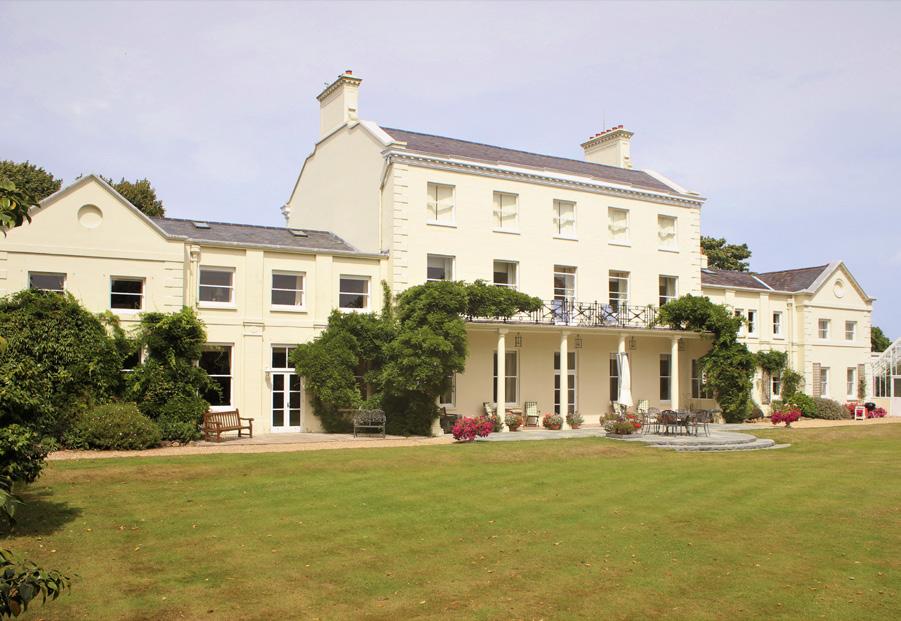
Despite this help, there was still plenty of research for Trevor to undertake. The process of compiling and writing the book was supported by searches and study in Guernsey’s GuilleAllès Library and Priaulx Library.
“I spent many happy hours going through old books as there is simply so much information to look at. There is a house called Woodlands, for example, where the owner kept a diary. I went into the Priaulx Library and asked to see Mr Mollet’s diary. I expected them to come back with a notebook – instead they gave me an archive box full of leatherbound ledgers. It took longer than expected, but it was a fascinating experience. The Island Archives and Guernsey Museums are also rich sources of information as are the Greffe, La Société Guernesiaise and The Guernsey Society.” Such was the research required for the book that Trevor had to condense a mass of information in order to provide the concise entries for each property in the publication.
Trevor describes his book not as a detailed architectural guide, but more a general interest publication concentrating on the age, construction and above all appearance of the featured houses. Nevertheless, it also has a wealth of detail that would satisfy those with more an expert interest, and an insightful foreword by architect, Andrew Dyke, paves the way ahead for the reader.
Like many of the Guernsey houses it profiles, the book also has a couple of interesting little quirks such as a comprehensive glossary right in the centre of the publication.
“I wanted to ensure the glossary was not overlooked. There is a lot of important information to get across covering intrinsic Guernsey expressions. People will have come across terms such as fief,
La Colombelle Government House
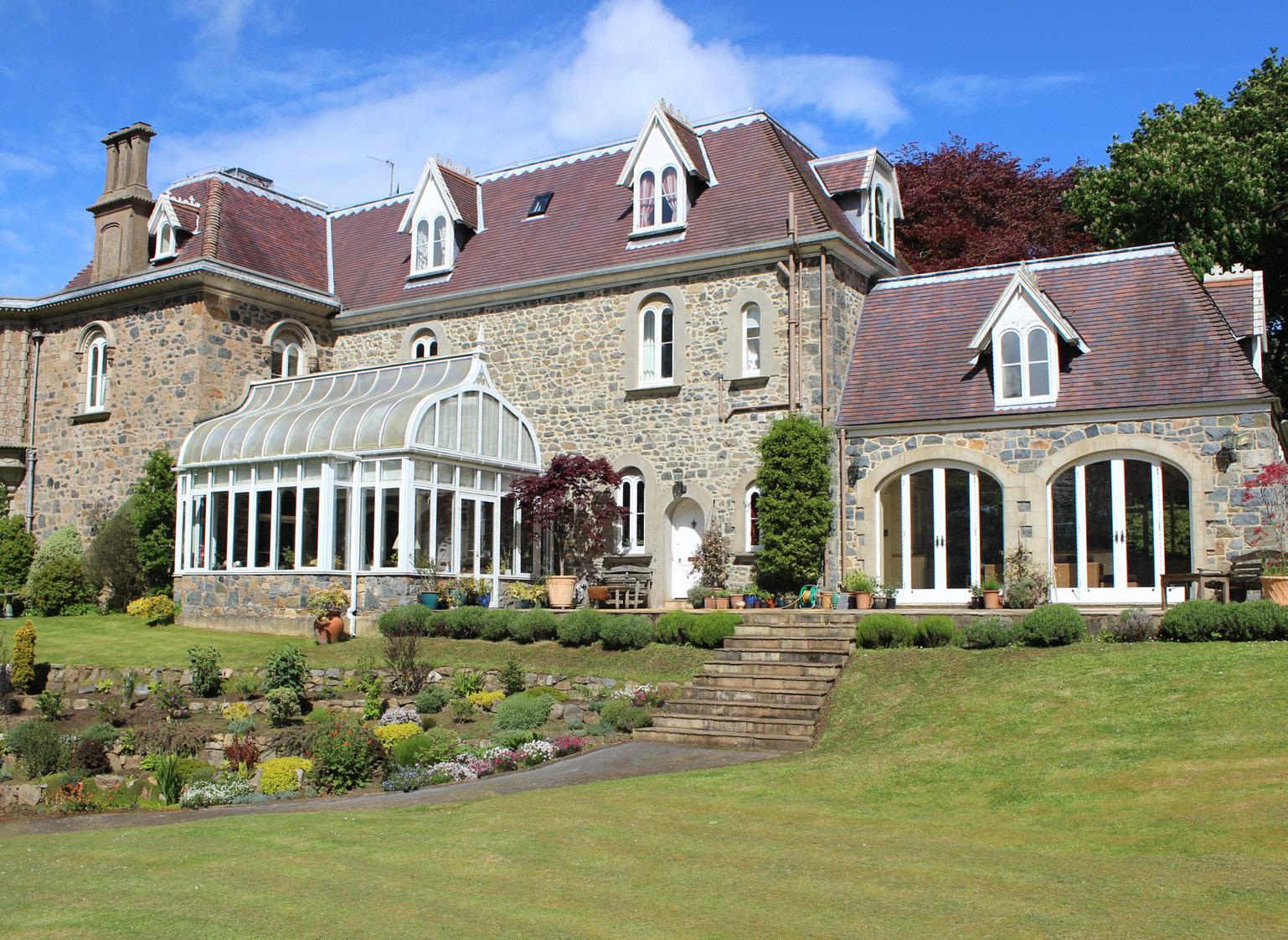
THE OWNERS REALLY DO SEE THEMSELVES AS CUSTODIANS OF GUERNSEY’S HERITAGE. SPENDING TIME WITH THEM OFTEN UNEARTHED INVALUABLE NUGGETS WHICH I WOULD NEVER HAVE FOUND THROUGH STANDARD RESEARCH.
rente and congé, but perhaps not fully understood them. This way as they go through the book and see the local references, they can easily find an explanation.”
Trevor admits the book’s publication saw him feel a mixture of elation and relief, having taken more than three years to write and compile. Now it is in the public domain, the net sale proceeds will be donated to local charities and principally the Guernsey Cheshire Home. He thought it appropriate that such a richly deserving home-from-home of such benefit and standing in the island should profit from his book about illustrious houses that have been home to many generations of islanders over many centuries.
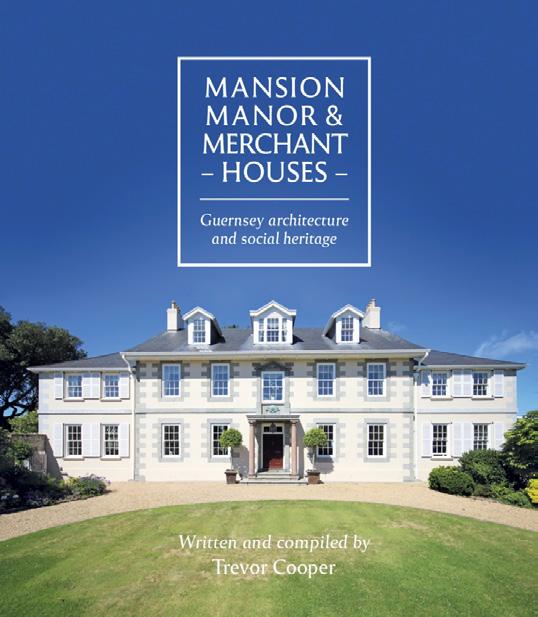
BUY THE BOOK
‘Mansion, Manor & Merchant Houses’ is available at The Lexicon bookshop and other retail outlets including Guernsey Museums and Gallery at Candie Gardens. It can also be ordered directly from the publisher at .blueormer.co.uk, priced at £30.









